Nachkebia
Well-known
: Shake-hands :
HansDerHase
Established
This is just and only a result of how Mr. Wheatley wants his pictures to look like. For counter evidence check out how Constantine Manos wants his pictures to look like. (Click on the M8 link on the right ). Mr. Manos likes 'em well saturated. See how the colors pop like Velvia on steroids (as far as one can tell from staring at a computer screen).Sorabji said:If anyone saw the Simon Wheatley pictures in BJP with the M8, you must agree that the results are rather disappointing. Colours look flat and dull. Contrast is lacking and images generally look lifeless. Is this the result of digital imaging in general or specifically the M8?
Last edited:
Nachkebia
Well-known
Another blind statment, it has been long time since you have seen velvia obviously... did you also check that plastic high-lights? does those look like velvia too?colors pop like Velvia on steroids
KM-25
Well-known
The more I use Kodachrome in my M6, the less I care for digital. It has a place in my work, IE: Income, but it is just not the same.
This is from a guy who has an archive of nearly 300,000 Canon digital files.
It will most likely be at least 3 years until I even consider a digital M.
This is from a guy who has an archive of nearly 300,000 Canon digital files.
It will most likely be at least 3 years until I even consider a digital M.
telenous
Well-known
KM-25 said:The more I use Kodachrome in my M6, the less I care for digital. It has a place in my work, IE: Income, but it is just not the same.
This is from a guy who has an archive of nearly 300,000 Canon digital files.
It will most likely be at least 3 years until I even consider a digital M.
Just an aside to the above comment - I just received back a roll of Kodachrome 64 which I sent intentionally to the Lausanne lab after they closed down. It came back three weeks after my initial despatch (presumably it was sent to the US and back), so it is still possible to use this wonderful film in Europe.
devils-advocate
Member
Does a Cibachrome look different than a mini-lab RA-4 print? Does a print from a chromogenic BW film look different from a print from a traditional BW film? Yes and yes, of course.
So I absolutely agree that digitally-captured images often have a different look than film-captures. There is also a significantly greater range of 'looks' one can accomplish with digital because of the range of post-processing options.
I also agree that Wheatley's images look like sh*t. Yes, it's likely a subjective choice, but an unfortunate one.
However, this thread has a 'digital is inferior' subtext (and sometimes not-so-subtext). Frankly, I thought we were past that. A well completed image from digital capture is capable of emulating all of the best qualities of film, and then some. The classic 'tell' in identifying digital from file is the smoothness of the tone(owing to the absence of grain), not any alleged defect in colour or anything else.
I have seen digitally-captured images printed (16x16) on traditional fibre-based paper (through a very high-end Lambda) which looked like 8x10 contact prints -- absolute brilliance -- from a 'mere' 22mp MF digital back.
Similarly, there are artists who produce colour prints of astonishing quality from digital capture. One can only tell, or guess, that film was not involved because of how high the quality is.
But guess what, it's HARD! to produce fabulous output from digital capture. A lot of technical elements (profiles of cameras, monitors, output devices) and skills (use of converters, sharpeners, photoshop, etc) have to come together. It's the hardest thing since....oh, getting a perfect BWprint on FB paper using the Zone system with a viewcamera on BW film.
Those who criticize the digital 'look' in broad terms are actually criticizing the lack of skill & effort expended by the creator. And yes, it's warranted quite a lot of the time. We have been sold digitial on the whole ' it's-so-easy-any-idiot-can-push-the Ansel-Adams-button' line. That's a marketing scam.
Producing great images from digital capture is at least as hard, at least as time consuming and at least as expensive as doing so with film.
The advantages of digital lie with things like the fact that I now carry the equivalent of 12 rolls of every speed of BW and Colour film in the camera at the same time, can interact with my subject and 'work' a picture in real time like never before, can achieve better ultimate quality in output from cameras of equal size if I do everything right and can once again have the joy of creating images in my uber-urban home (where $400/sq foot real-estate costs make a darkroom an impossibility).
Digital is a great advance in photography, as it has created really an entire new medium, with endless creatrive possibilities. Film-based photography is great, too. Nothing in the digital world feels like watching a great print emerge in the developer tray.
Can we all hold hands and say mutually-validating things now? :angel:
- Nick.
So I absolutely agree that digitally-captured images often have a different look than film-captures. There is also a significantly greater range of 'looks' one can accomplish with digital because of the range of post-processing options.
I also agree that Wheatley's images look like sh*t. Yes, it's likely a subjective choice, but an unfortunate one.
However, this thread has a 'digital is inferior' subtext (and sometimes not-so-subtext). Frankly, I thought we were past that. A well completed image from digital capture is capable of emulating all of the best qualities of film, and then some. The classic 'tell' in identifying digital from file is the smoothness of the tone(owing to the absence of grain), not any alleged defect in colour or anything else.
I have seen digitally-captured images printed (16x16) on traditional fibre-based paper (through a very high-end Lambda) which looked like 8x10 contact prints -- absolute brilliance -- from a 'mere' 22mp MF digital back.
Similarly, there are artists who produce colour prints of astonishing quality from digital capture. One can only tell, or guess, that film was not involved because of how high the quality is.
But guess what, it's HARD! to produce fabulous output from digital capture. A lot of technical elements (profiles of cameras, monitors, output devices) and skills (use of converters, sharpeners, photoshop, etc) have to come together. It's the hardest thing since....oh, getting a perfect BWprint on FB paper using the Zone system with a viewcamera on BW film.
Those who criticize the digital 'look' in broad terms are actually criticizing the lack of skill & effort expended by the creator. And yes, it's warranted quite a lot of the time. We have been sold digitial on the whole ' it's-so-easy-any-idiot-can-push-the Ansel-Adams-button' line. That's a marketing scam.
Producing great images from digital capture is at least as hard, at least as time consuming and at least as expensive as doing so with film.
The advantages of digital lie with things like the fact that I now carry the equivalent of 12 rolls of every speed of BW and Colour film in the camera at the same time, can interact with my subject and 'work' a picture in real time like never before, can achieve better ultimate quality in output from cameras of equal size if I do everything right and can once again have the joy of creating images in my uber-urban home (where $400/sq foot real-estate costs make a darkroom an impossibility).
Digital is a great advance in photography, as it has created really an entire new medium, with endless creatrive possibilities. Film-based photography is great, too. Nothing in the digital world feels like watching a great print emerge in the developer tray.
Can we all hold hands and say mutually-validating things now? :angel:
- Nick.
S
StuartR
Guest
Sorabji said:Dear all of you,
The pressures from many users have forced the digital tide upon Leica and to be fair to them, they have evidently come up with the goods in the shape of the M8.
However, if like me, you are a blissfully happy analogue M user, you cannot deny that there is a different look to digital images in general. Some may say this is just a difference, not necessarily better or worse. Some may even say, if I'm blissfully happy with the analogue M's, why bother posting about the M8? "Film" is the issue? How long will it be available at a reasonable price?
If anyone saw the Simon Wheatley pictures in BJP with the M8, you must agree that the results are rather disappointing. Colours look flat and dull. Contrast is lacking and images generally look lifeless. Is this the result of digital imaging in general or specifically the M8? Most digital files I see have great clarity, but show no depth in the image quality - compared to film.
Can anyone help with a knowedgable answer, or am I the only one who perceives these differences? Most experts tend to fall in the firmly biased digital camp, because they're young and want to embrace the new technology etc., so I've found precious little material on the net with regard to the scientific analysis of image qualities of both analogue and digital.
First of all, welcome to the forum. I am sorry, but I have not seen the Simon Wheatley pictures you have mentioned, but I think I would agree with jaapv who state that it is all about what the artist chose to do with the images. I shoot mostly film, but also digital with the Leica Digital Modul-R. By default, the RAW files give you a low contrast image. It is up to you to form it into something you are comfortable with. Personally, I have found the files out of the DMR to be similar to film in quality, but with a different look. Part of this is the lack of any grain, which as you note, increases the clarity of the images. I do not think that it handles black and white or the most subtle color transitions as well as film, but it does not make a difference in most applications.
I believe part of the reason for this is the way digital sensors (other than the Foveon) work. The sensor is a matrix of red, green and blue pixel wells. If blue light enters a blue pixel well, it turns on. If blue light enters a red pixel well, nothing happens. If only red pixels or mostly red pixels are on in one area, the camera will guess that that area is entirely or mostly red, so it will make the blue and green pixels show up red. The firmware is very very good at this, and for the most part it works wonderfully, but for the most subtle color transitions you are always getting an approximation. The foveon chip, which is built in a red, green and blue layer like film, does not have this problem. And of course, film does not have it either.
Basically, I would say that shooting digital is like shooting negative film, even if it presents you with a positive image. You need to take the time to properly adjust the contrast, color balance and tonal range to your preferences. Whereas slide film is pretty much natural (or unnatural for films like Velvia) out of the gate, digital requires you to supervise the decisions that the camera made for you when it took the image. It is not better or worse, than it can be either in different situations.
Anyway, here are some digital shots from the DMR...I think they look nice, but perhaps you would characterize them as lifeless. Everyone has their own preferences.
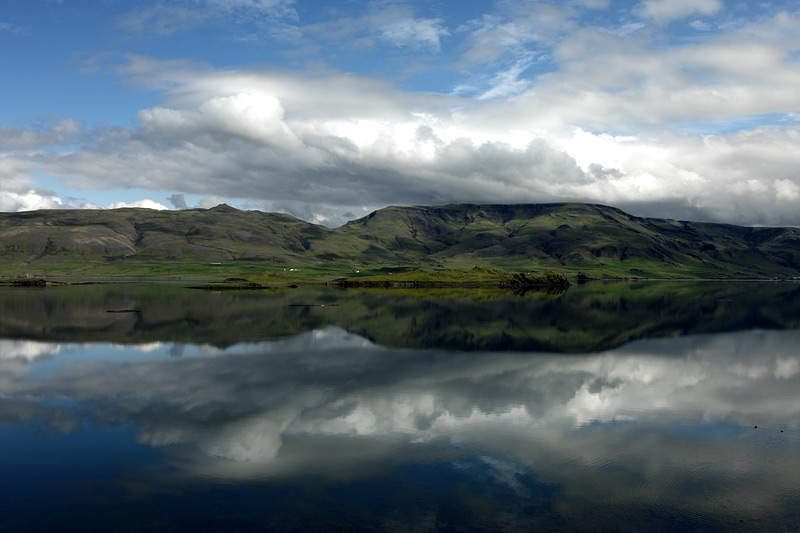
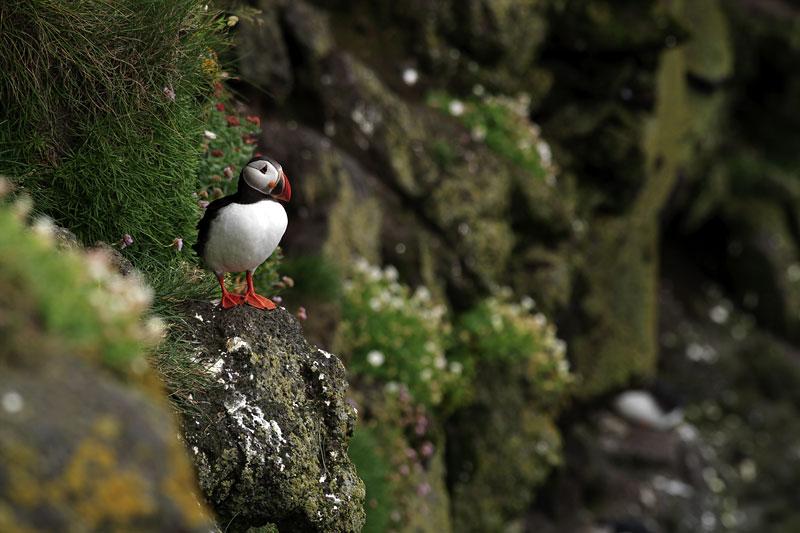
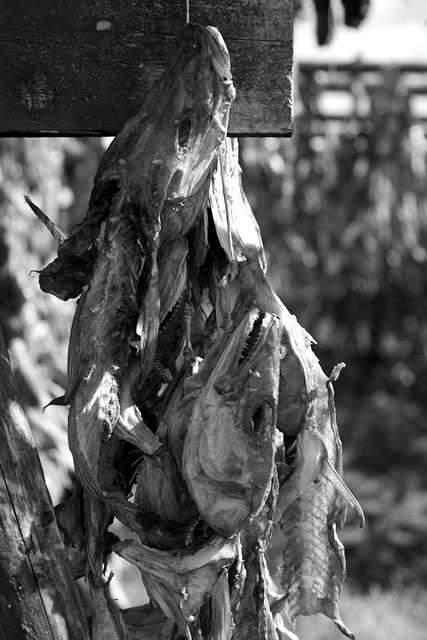
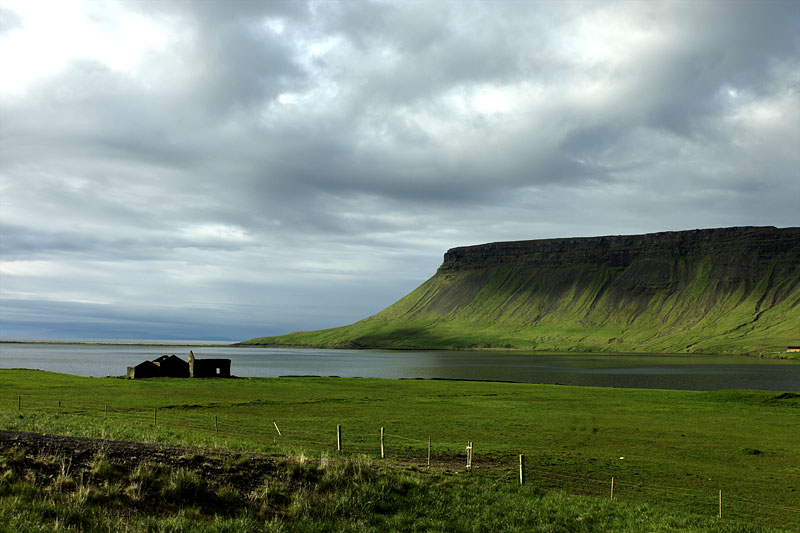
And here are some film shots from the same or similar areas.
This is the same shot of the drying fish with 6x7cm film...so much much much larger imaging area. It looks better, but it would look better than 35mm film too.
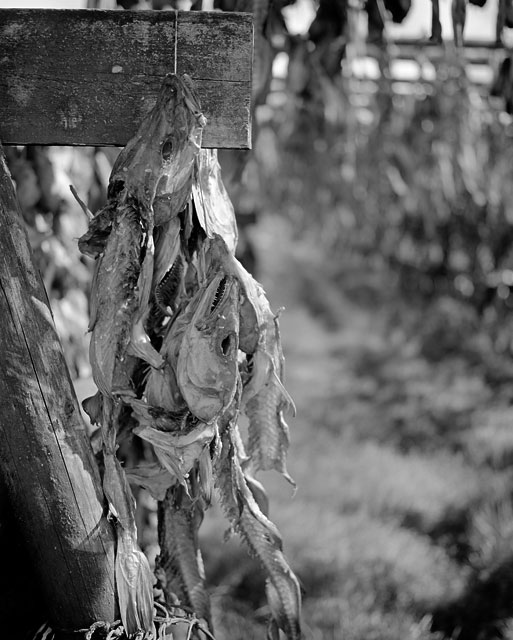
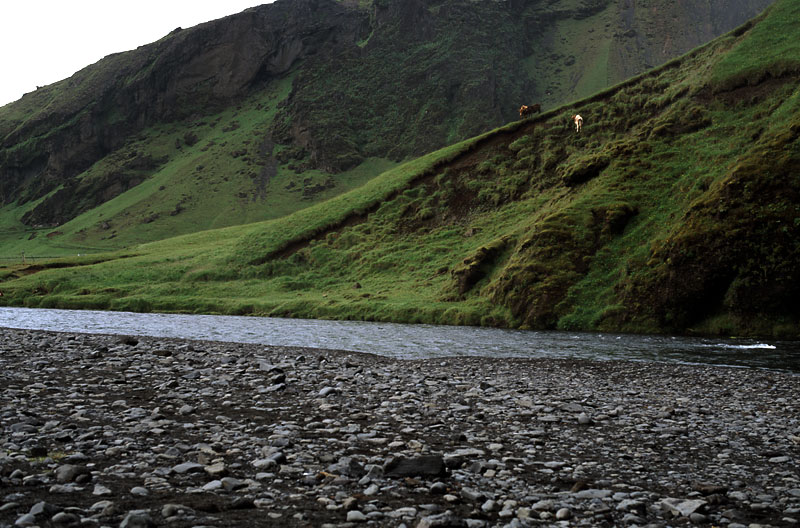
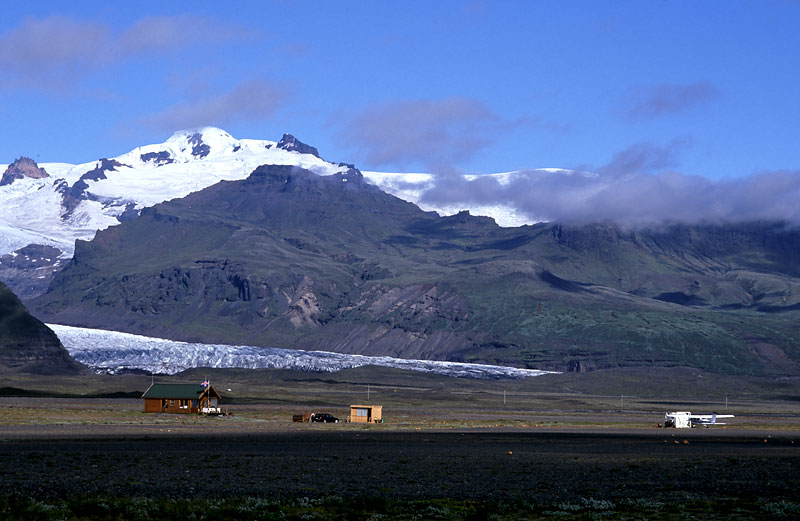
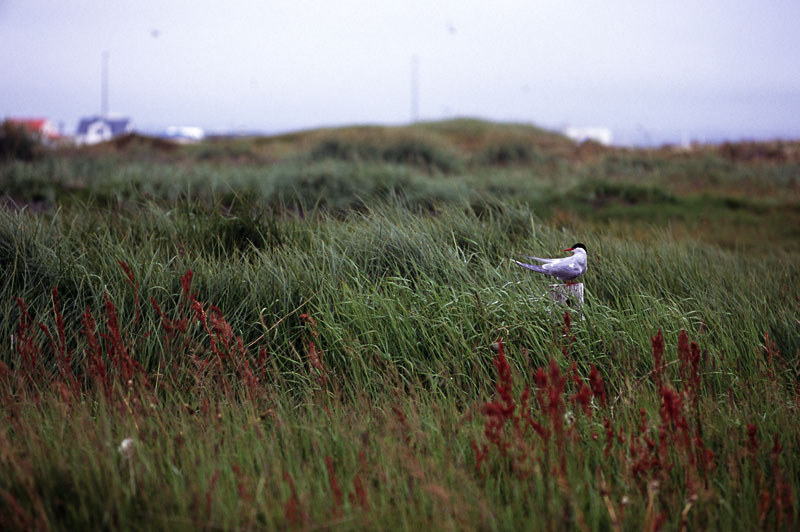
Nachkebia
Well-known
That is the main problem, absence of random grain and having of paterned noisefile is the smoothness of the tone(owing to the absence of grain)
Last edited:
ywenz
Veteran
StuartR:
Your DMR shots are very nice. But I must say that the Iceland 2005 pics shot on Velvia are of a different level- maybe it has to do with the more dramatic scenery in those shots. However, I can imagine that someone people would perceive the DMR shots as life-less simply because it has a different look to their baseline, which would be film/slides...
with regards to Simon Wheatley's pics, are you talking about these M8 pictures?
http://www.magnumphotos.com/c/htm/F...tfolio_DocThumb&V=CDocT&E=29YL534I6804&DT=ALB
I actually think these look quite good
Your DMR shots are very nice. But I must say that the Iceland 2005 pics shot on Velvia are of a different level- maybe it has to do with the more dramatic scenery in those shots. However, I can imagine that someone people would perceive the DMR shots as life-less simply because it has a different look to their baseline, which would be film/slides...
with regards to Simon Wheatley's pics, are you talking about these M8 pictures?
http://www.magnumphotos.com/c/htm/F...tfolio_DocThumb&V=CDocT&E=29YL534I6804&DT=ALB
I actually think these look quite good
Last edited:
jaapv
RFF Sponsoring Member.
__________________That is the main problem, absence of random grain and having of paterned noise and again people mentioning skils of photoshop, full of junk, you wont be able to emulate or simulate, for the reason mentioned on top, also there is more, I remember fuji trying to simulate all this with doing crystal form sensor which will try to simulate randomnes of light and tonality, until then happy photoshoping files from $5000 camera
In a way I do agree with Nachkebia here. It is senseless to try and photoshop digital images to look like film and a particular film to boot. But my point is - one shouldn't do so but one must use the strengths of the digital file to produce outstanding images- as illustrated here. If it must look like film -use film. Having said that, with the reference frame most of us (still?) have, it is logical to use film terms to describe images - but it does confuse the issue to do so.
x-ray
Veteran
This discussion is nothing new. There are as many wiews on how an image should be shot and presented as there are photographers. Whether it's platinum vs silver or digital vs film it's the same old argument. Each are different with neither better or worse. A good example of different interpretations of the same ismage can be seen in Edward Westons work. Edward printed his negs very flat, too flat for my taste, and Cole printed with much more contrast and snap. I studied with Ansel Adams in the 70's and there is a great deal of variation in his prints of the same image over the years. His vision of how they should be printed changed dramatically. My own vision of how I print has changed.
There seems to be three camps on color now. One which I like is a more natural rendering where others like over saturation. over sharpening and contrasty images. The third is very flat pastel and soft like Loretta Lux prints her work.
Neither is bad but just different ways each artist depicts their work. I shoot film in my documentary and art images and use digital for my commercial work. Both are great tools and now we have the choice. With digital atleast we have a chance to create our own look by adjusting curves and creating our own "electronic emulsion" look and not being bound to the vison some engineer in Rochester or Japan had for how our work shoul look. We have choices with digital well beyound anything we could do with film.
Personally I don't know what the future of color film will be. I think B&W will be here for a good bit of time. We have a great deal of film choice now as far as B&W goes and don't see this changing any time soon.
There seems to be three camps on color now. One which I like is a more natural rendering where others like over saturation. over sharpening and contrasty images. The third is very flat pastel and soft like Loretta Lux prints her work.
Neither is bad but just different ways each artist depicts their work. I shoot film in my documentary and art images and use digital for my commercial work. Both are great tools and now we have the choice. With digital atleast we have a chance to create our own look by adjusting curves and creating our own "electronic emulsion" look and not being bound to the vison some engineer in Rochester or Japan had for how our work shoul look. We have choices with digital well beyound anything we could do with film.
Personally I don't know what the future of color film will be. I think B&W will be here for a good bit of time. We have a great deal of film choice now as far as B&W goes and don't see this changing any time soon.
S
StuartR
Guest
ywenz said:StuartR:
Your DMR shots are very nice. But I must say that the Iceland 2005 pics shot on Velvia are of a different level- maybe it has to do with the more dramatic scenery in those shots. However, I can imagine that someone people would perceive the DMR shots as life-less simply because it has a different look to their baseline, which would be film/slides...
Thanks ywenz,
I was trying to choose representative work, but I think that part of the problem is that I am still not very good with digital. I can make it look punchy, but no particularly subtle. I am good at scanning slides and getting them to more or less match the slide, but I don't know that much about digital post processing since I have only been doing it for a few months. I can do levels and so on, but I am not up on curves, masking, shadow/highlight or any noise management.
But anyway, I think you have a very good point about people preferring the look of their baseline. I would even agree...if I could get digital to look like slides straight out of the camera, I would much prefer it even if I had to sacrifice some processing flexibility. At this point I am shooting both so that I can learn as I go. I think it is the best method for me for the moment.
Nachkebia
Well-known
Me too, I think it is perfect in that way and it works. but was not suposed M8 to be for documentary and art? not for rich belly boys in the weekend park walk shooting flowersI shoot film in my documentary and art images and use digital for my commercial work.
furcafe
Veteran
Yes, but even the line @ Dwayne's will eventually shut down.
telenous said:Just an aside to the above comment - I just received back a roll of Kodachrome 64 which I sent intentionally to the Lausanne lab after they closed down. It came back three weeks after my initial despatch (presumably it was sent to the US and back), so it is still possible to use this wonderful film in Europe.
HansDerHase
Established
You allready guessed that I'm not a big fan of Velvia, do you. I'm not a big fan of colour after all. But I can't see a big problem in the hightlights. I'm not sure what you mean or how you define plastic highlights. I need some demonstatrion that Velvia's highlights are any better in night scene at, well, guesstimated LV 6 or 7. Which usually need some really high dynamic range. Highlights block on slide just as they do in digital when you push beyond the limits.Nachkebia said:Another blind statment, it has been long time since you have seen velvia obviously... did you also check that plastic high-lights? does those look like velvia too?
That aside, my point was, that the primary factor for color saturation is not the sensor (film or digital) anymore as soon as you have a digital file.
Last edited:
Toby
On the alert
Nachkebia said:Me too, I think it is perfect in that way and it works. but was not suposed M8 to be for documentary and art? not for rich belly boys in the weekend park walk shooting flowers
Maybe Leica should make people submit a portfolio before they sell them a camera. I'm sure that would make perfect business sense
grantray
Established
While I understand your point, which is valid, there is no need to get flustered, Nachkebia. The M8 will not, nor is it inherintly designed to, record images in the manner of film. All that talk that it will is just marketing. The film-based M's and the M8 are different devices- much like a company that manufactures both charcoal and lead based drawing materials.
For me, the M8 is a tool that presents a new set of parameters which will challenge the way I work within the medium of photography. I have no plans on being frustrated when the images from my M8 record something with a different look and feel than film. In fact, I'm excited to delve into the plasticity of the RAW workflow. I look forward to finding the limitations of the device and accepting them as artistic challenges, whether that be film, digital, or the various densities of drawing materials and paper textures and weights. And will I be upset if I spend hours to get what I want out of a DNG file off the M8? My drawings take MONTHS. A measly hour or two on a photographic image is chickensh!t.
So, in the end, rejoice! Leica has made a new tool that requires new ways of working and thinking. Zeiss will surely follow with one of its own soon. And for God's sake, stop comparing digital to film. That argument is boring already.
-grant
For me, the M8 is a tool that presents a new set of parameters which will challenge the way I work within the medium of photography. I have no plans on being frustrated when the images from my M8 record something with a different look and feel than film. In fact, I'm excited to delve into the plasticity of the RAW workflow. I look forward to finding the limitations of the device and accepting them as artistic challenges, whether that be film, digital, or the various densities of drawing materials and paper textures and weights. And will I be upset if I spend hours to get what I want out of a DNG file off the M8? My drawings take MONTHS. A measly hour or two on a photographic image is chickensh!t.
So, in the end, rejoice! Leica has made a new tool that requires new ways of working and thinking. Zeiss will surely follow with one of its own soon. And for God's sake, stop comparing digital to film. That argument is boring already.
-grant
Nachkebia
Well-known
I am not comparing, M8 owners are comparing M8 to filmAnd for God's sake, stop comparing digital to film. That argument is boring already.
ywenz
Veteran
Toby said:Maybe Leica should make people submit a portfolio before they sell them a camera. I'm sure that would make perfect business sense
I think what Nach was alluding to was these "belly boys" with their weekend walk flower shots are the ones trumping the equipment's greatness against utter evidence that say otherwise.
IGMeanwell
Well-known
Nachkebia said:Another blind statment, it has been long time since you have seen velvia obviously... did you also check that plastic high-lights? does those look like velvia too?
If you actually watched that essay .. you will notice many of those photos were taken by Constantine in the early 90s with slide film as he states ... so I am not totally sure who is mistaken in that statment
Share:
-
This site uses cookies to help personalise content, tailor your experience and to keep you logged in if you register.
By continuing to use this site, you are consenting to our use of cookies.
